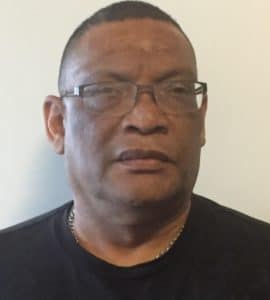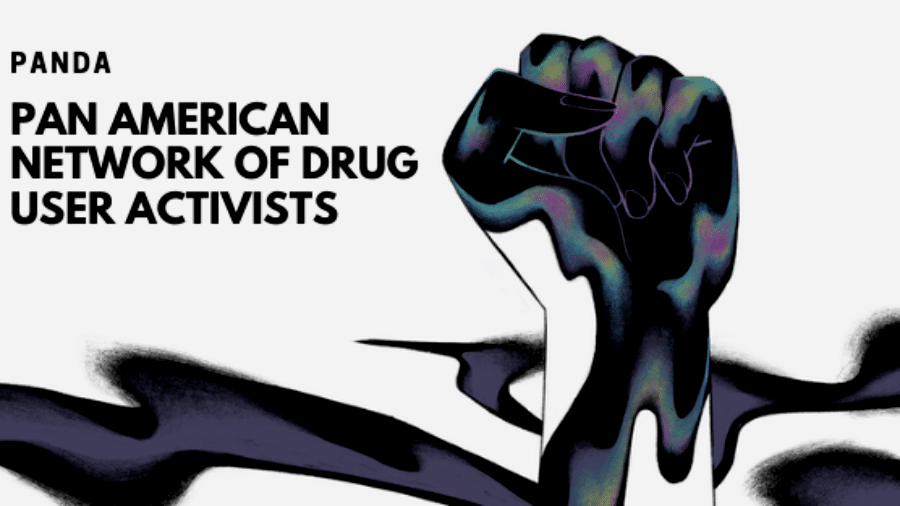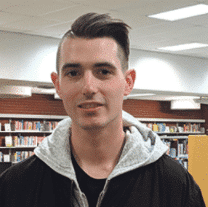You can draw interwoven lines of suffering right down through the Americas.
British Columbia, Canada has announced 175 illicit-drug overdose deaths for the month of June—the highest number ever in a single month. That’s four years after the overdose crisis was deemed a public health emergency in the province.
At the end of that month, the murder of George Floyd by a police officer in Minneapolis sparked uprisings against racist policing and white supremacy across the United States and in many other countries—including Canada. The US is meanwhile the country that suffers the most drug-involved fatalities, and new preliminary data project a record 71,000 deaths in 2019.
In Mexico, the war on the drug trafficking industry continues to drive relentless violence and murder, as people similarly rise up against police killings. Those who die of overdose there are too often overlooked by their northern neighbors.
Our interwoven lines continue, through Colombia, for example, where US forces were recently deployed to assist with the attempted eradication of coca crops and poor families’ livelihoods; or Peru, where poor fishermen tempted into running drugs are picked up and incarcerated by the US Coastguard; and on and on.
It’s time for those of us who use drugs to take the wheel.
So much death and pain, much of it so obviously connected. Drug-user networks connecting across the Americas will make us stronger, giving us the power to fight back as an interconnected, united front.
That’s why representatives from some leading drug user-led, community-based groups, including ourselves, have recently been meeting online. Our agenda? Working collectively against the cycle of drug-war oppression and death.
These meetings were initially aimed at creating a North American network of people who use drugs, encompassing Canada, the US and Mexico. The ambition now is to transcend the borders of North America, creating a Pan-American Network of Drug-user Activists—PANDA—to abolish the prohibition that harms us all.
It’s time for those of us who use drugs to take the wheel.
The Background
International networks of people who use drugs already exist—most prominently, INPUD. And North American activists have proposed cross-border collaborations for some years.
The Vancouver Area Network of Drug Users (VANDU) led the trend to establishing national networks, uniting people who use drugs within Canada, to demand our inclusion in drug policy; we now have the Canadian Association of People who Use Drugs (CAPUD), which has representation across the country.
Harm reduction advocate Robert Suarez, of VOCAL-NY, was one of those who previously looked into developing a North American network. During the first of our recent meetings, he told us about a session he hosted at the 2017 Harm Reduction International conference in Montreal.
Suarez explained that although enthusiasm for a North American alliance was strong, user unions and groups didn’t have capacity to see it through. “I totally got it,” Suarez said of that attempt. However: “I am thrilled that this conversation is being had [now] … It is needed desperately.”
In many ways, COVID-19 was the catalyst for reconsidering the need for cross-border collaboration. The pandemic has been disastrous for many drug users and their loved ones, shining a brighter light on the cracks in our systems. Health disparities have shown who has been protected during this crisis, and who has been forgotten.
“Build strong locals… We are a grassroots movement—a movement from below.”
While physical distancing orders disrupted many traditional harm reduction interventions, others have sprung up in response. And engagement across borders became a more obvious pathway once online activism became the norm—at least, for those privileged enough to have stable internet access.
“Don’t just build an organization via teleconference,” cautioned Crackdown podcast’s Garth Mullins, whom we interviewed for advice on building a cross-border drug-user alliance. “Build strong locals, rooted in the community … We are a grassroots movement—a movement from below.”
With this advice in mind, we started to think and talk about how a virtual pan-American alliance—by sharing information, strategies, experience and support from local sources—could keep its eyes and ears to the ground.

Attendees at one of the recent online meetings
Education: Sharing and Access
Canada and the US, whose representatives connected for the initial meetings, are well positioned to form an alliance for reasons beyond proximity and a common language.
“North America is the epicenter of the War on Drugs,” said Aaron Ferguson, of the US national Urban Survivors Union (USU) leadership team. That shows up in incarceration and overdose rates. Both countries are rich but characterized by inequality—and principally consumers, rather than producers, of drugs.
“Prohibition and the War on Drugs was never meant for our health and safety,” said Erica Thompson, executive director of the British Columbia/Yukon Drug War Survivors. Rather, she noted, it criminalized oppressed groups and continued the racist legacy of slavery and colonialism.
“One of the main reasons is to show solidarity amongst all people who use drugs in the Americas.”
But the policies that originated in the United States, as well as insatiable buying-power of the US and Canada, have obvious, major impacts on countries to the South, which was partly why a US-Canada alliance wasn’t considered sufficient.
“The War on Drugs is global but there is a pan-American component to it.” said Adam Palayew, an incoming PhD student in Epidemiology at the University of Washington. “The pan-American nature of the group is for many reasons, but one of the main reasons is to show solidarity amongst all people who use drugs in the Americas.” This also brings, he continued, “the opportunity to learn and share experiences from a multitude of different settings.”

Adam Palayew
Education around prohibition can ignite anger, but also understanding. When drug users are socially or physically isolated, we are often made to feel responsible for harms associated with drug use, and we internalize that. Awareness of the structural barriers created and exacerbated by prohibition can combat those feelings of shame—and the more international our perspective, the greater our understanding of a cross-border system of oppression.
International access to education is something for which USU Executive Director Louise Vincent and her leadership team—including Sara Brothers and Dinah Ortiz, who also attended the recent meetings—have fought passionately. Recognizing an “inequity in learning systems,” they sought resources to travel to Canada to share experiences and strategies with activists there.
“It’s critical,” Vincent said, “for drug users to see what’s actually possible.”
 Louise Vincent
Louise Vincent
Gilberto Perrez, of the Mexican harm reduction network REDUMEX, believes in the potential of a pan-American mutual education efforts. He described the opportunity—particularly to involve and learn from some of the most marginalized ethnic groups throughout the Americas—as “unique.”
But clearly, energetic outreach efforts, some of which have already begun, will be essential to achieve much wider representation of countries and cultures in our nascent group. This is vital in part because we all have much to learn.
Many harm reductionists look to Canada, where we live, as a beacon of hope—thanks, for example, to our safe consumption sites and opioid safe supply projects. But our recent political history shows that we can take backward steps as well as forward ones, and our continuing overdose crisis underlines this.
Online organizing can help us transcend borders in a practical sense, too.
“In the drug war, you cannot fight the government alone,” said Mullins. Drug-user activists in North and South America should be hungry to share organizing strategies, learn from each other’s experience of which punitive laws to tackle first, and support each other in practical but also personal ways. Simply being there for one another, sharing authentically, can help build collective strength and power.
Online organizing can help us transcend borders in a practical sense, too. Many drug-user activists on either side of the US-Canada or US-Mexico borders, for example, have criminal records that prevent them from crossing. Those with low-level convictions may be able to purchase record suspensions or travel waivers but Thompson aptly likened this to “buying your way into heaven.” These options aren’t cheap, can take a long time to process, and still don’t always guarantee access.
The US-Mexico border also creates a far more tragic issue. Thousands of South and Central Americans fleeing drug-war violence and looking for safe haven in the US are denied and sent back every day. Until drug users and everyone else can move freely across borders, virtual organizing will often have to suffice.
But there are effective ways to do this. “Social media allows us to share knowledge at an incredibly fast pace,” pointed out Kira London Nadeau, chair of Canadian Students for Sensible Drug Policy, “making mobilizing and creating community across widespread physical spaces possible in a whole new way.”
USU notably holds a weekly organizing call, alternating its focus on drug-user rights and sex worker rights, and also hosts an “advocacy academy” on Basecamp. Our hope is that PANDA can come to work just as effectively across the Americas.
Building Our Own Systems, From the Root Up
Drug-user activists always have to grapple with operating within frameworks designed to keep us in the margins—and this applies equally to international collaborations.
“It’s not that we are vulnerable people,” said Thompson. “We’re vulnerable because of the system and policy. We’re the most resilient people I know.” Yet we are too often invited into decision-making spaces and tokenized.
David Frank, a postdoctoral fellow at New York University’s Behavioral and Science Training in Substance Use Research program and longtime person on methadone, recognizes the value of organizing in this context. “Drug-user unions provide a space for people who use drugs to demand their rights without having to adopt a redemptive pose or promise to be ‘better people,’” he told Filter.
Frank, who recently published a commentary in the International Journal of Drug Policy on methadone, noted that its inconsistent availability in many countries plays a role in the pan-American overdose crisis. For these reasons, he’s supportive of the effort to create PANDA.
“We don’t need to be so fucking perfect. We don’t want to work within their system.”
Even when current or former drug users are elevated within an organization, they are sometimes held to impossible standards. “People are hired for their lived experience, [then] fired for their lived experience,” said Vincent, joking that being fired from a harm reduction organization was almost a “rite of passage” for a bona fide drug-user activist. “We don’t need to be so fucking perfect. We don’t want to work within their system.”
“The systems are not made for us,” Vincent continued. “USU was designed deliberately as a team-based system … that operates around disability [and] where you can say what you need.”
In view of the experiences of Vincent and others, the early PANDA conversations have often focused on creating drug-user networks without bureaucratic harm reduction politics. We all agreed not to let the politics of funding get in the way.
To avoid potential points of friction, Frank Crichlow, president of CAPUD, suggested initially establishing a “pan-America universal definition for the following: harm reduction, safe supply, decriminalization, regulation and legalization.”
The importance of creating genuine space for people who use drugs, and showcasing “what successful harm reduction looks like,” as Vincent put it, was another common theme among organizers.
“Folks in the States really need some hope,” Ferguson agreed.

Frank Crichlow
The energy of the meetings certainly didn’t recognize any borders, although representation will need to greatly expand as the project continues. Everyone got a chance to express their passion for an alliance with our pan-American comrades. Some of us were left with tears in our eyes.
Now it’s time to follow through. We are the survivors of this drug war. A lot of us have experienced overdoses and years in prisons. We made it out alive so far.
“There are lots of people who use drugs that are willing and able to contribute … but are unsure of how to get involved.”
At the end of our June 10 meeting, many participants voiced a need to keep the momentum going. We talked about our next moves once the COVID-19 restrictions are lifted and we reach a “new ” normal, with a potential drug policy conference in mind to meet and organize in person. From creating an official alliance website to creating a mailing list for intelligence sharing across borders, there is a lot we can—and should—do, and many more voices we need to hear and include.
Crichlow said he believes that “there are lots of people who use drugs that are willing and able to contribute to drug-user advocacy but are unsure of how to get involved.” We need to work together to find them, and to continuously relay knowledge back-and-forth for people in drug-using survival mode.
People who use drugs know how to reduce—and eliminate—drug poisoning deaths. Despite everything, many of us have survived. We lived through the HIV/AIDS epidemic, prescription pill marketing malpractice, the renewal of the overdose poisoning crisis through fentanyl and its analogues, and now COVID-19 and the restrictions imposed.
Yet the notion that if you use drugs, you are unstable and can’t control your life has needlessly oppressed us all. People have always sought to alter their state of mind, and everyone has a need to seek comfort. The real crisis is not about any particular drug, but about the failed policies that afflict people who use drugs.
If PANDA does what we think it can, it will widely expose and combat these hypocrisies and the suffering they cause.
* Reija Jean contributed additional reporting to this article.
Top image courtesy of PANDA/Matthew Bonn. Photos courtesy of the individuals depicted and/or PANDA.






Show Comments